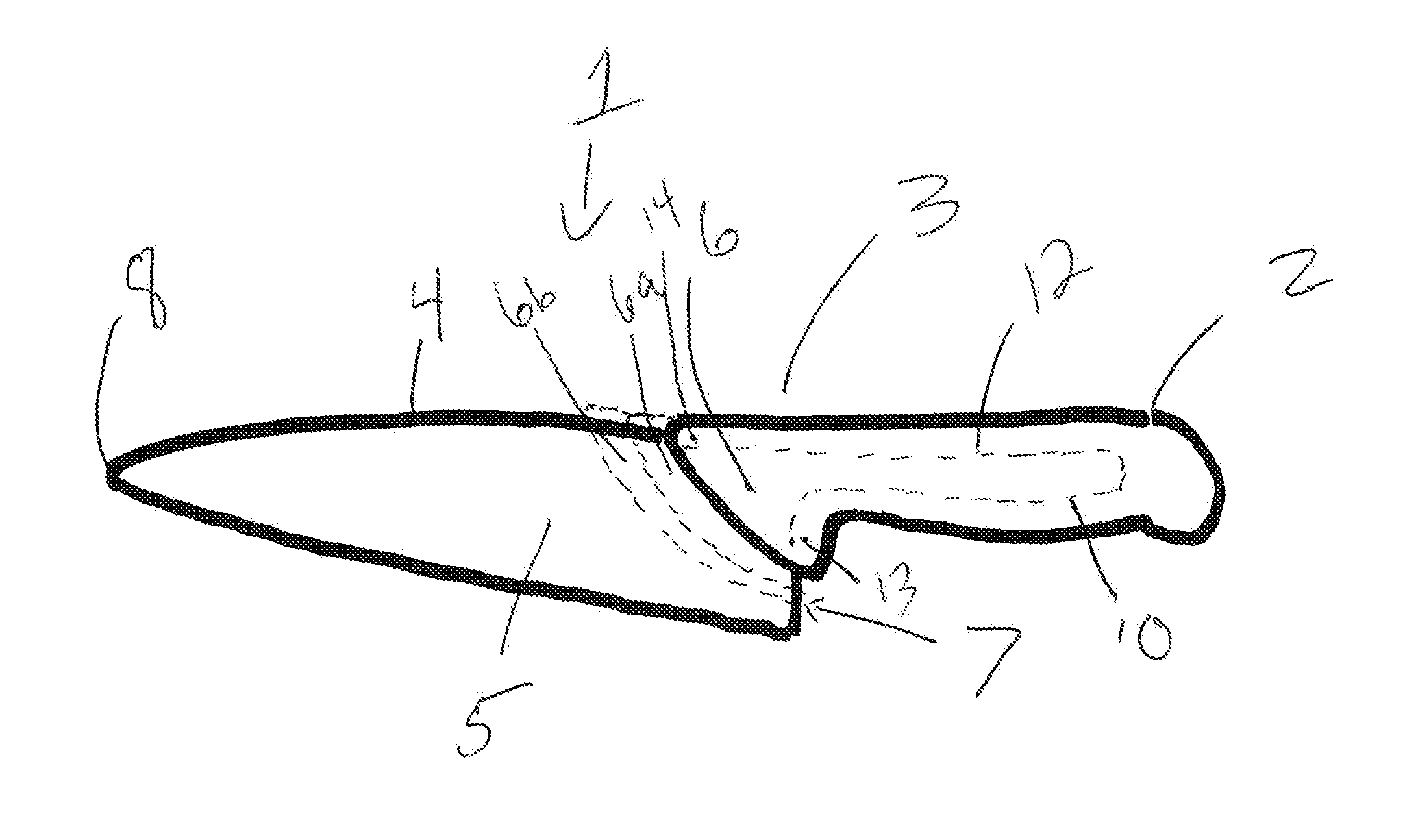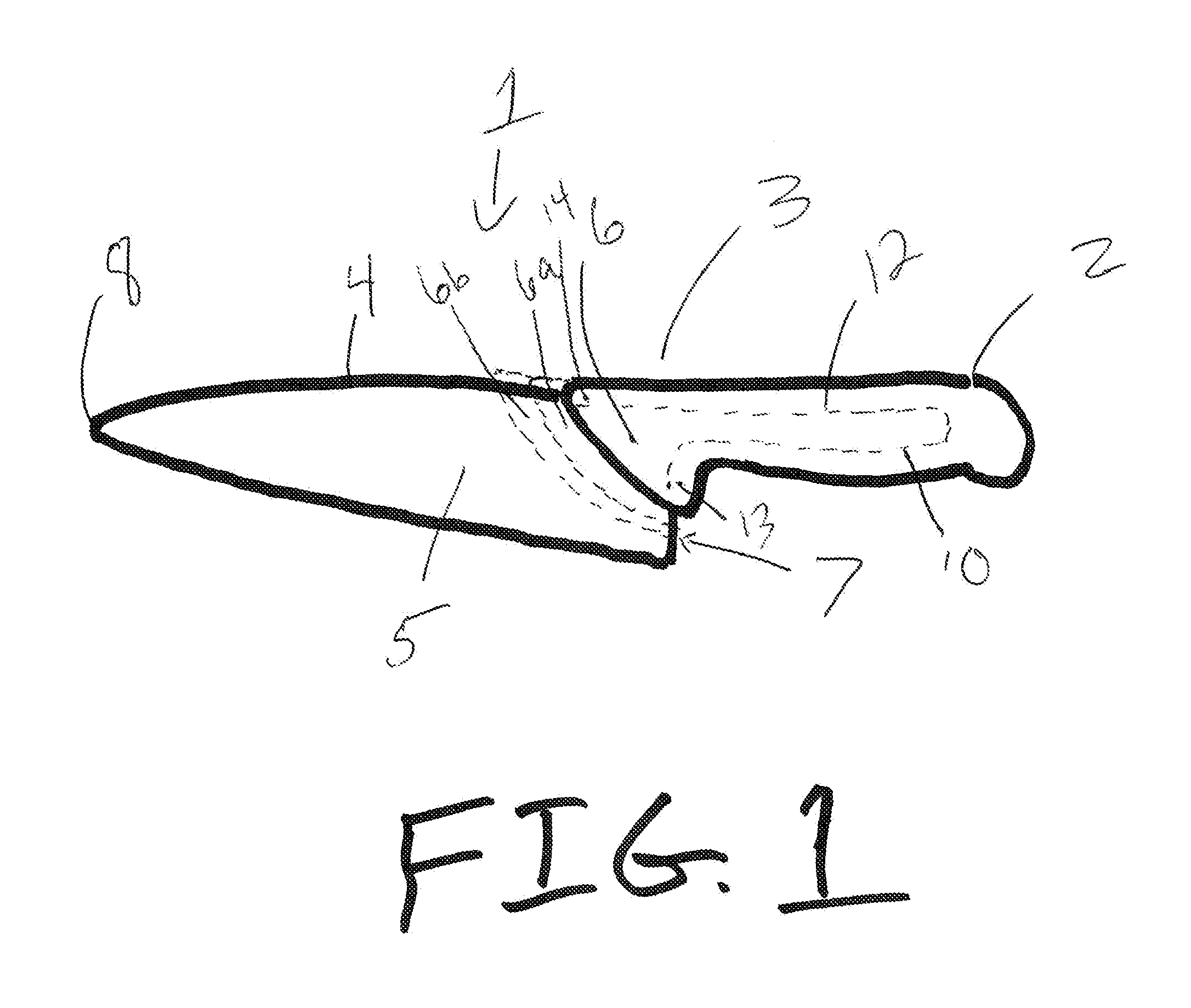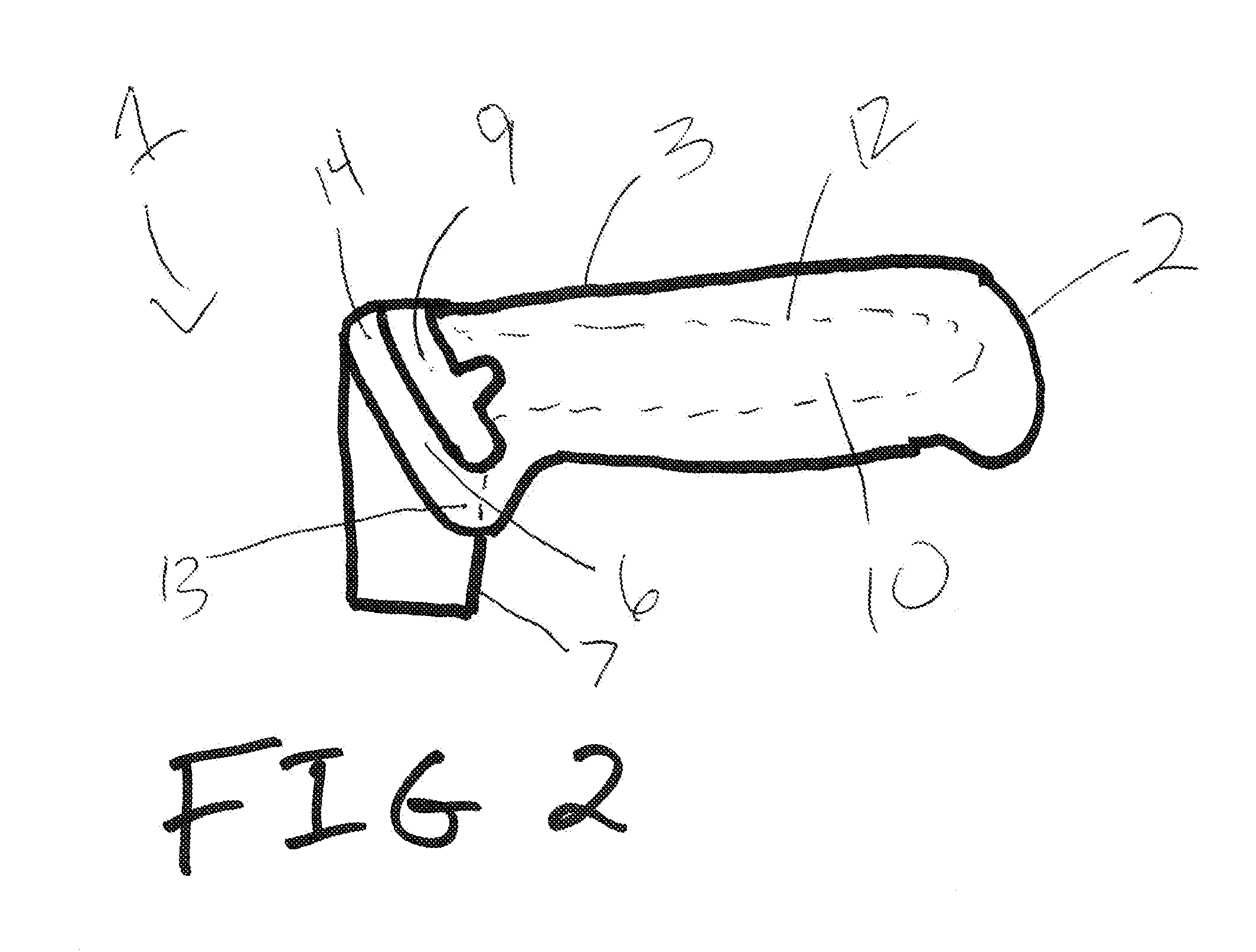Knife and Handle for Knife
a technology for knives and handles, applied in the field of knives, can solve the problems of user choking, blistering and callouses, and irritation of users, and achieve the effect of preventing any protective elements from slipping out of place during us
- Summary
- Abstract
- Description
- Claims
- Application Information
AI Technical Summary
Benefits of technology
Problems solved by technology
Method used
Image
Examples
Embodiment Construction
[0018]One embodiment of the knife of the current invention is illustrated in FIG. 1. In FIG. 1, the knife 1 and handle 2 are not particularly drawn to scale. That is, the dimensions of the knife 1 and the dimensions of the handle 2, both independently and in relation to each other can be different. The important aspect is that the handle 2 extends over the bolster, or what would be the bolster 3, onto the spine 4 of the blade 5 and covering a portion 6 of the heel 7 closest to the handle 2. The actual dimensions of the portion 6 over the blade 5 is not critical so long as it provides enough surface area to allow the user to choke up on the blade 5 and still be gripping the handle 2 with the thumb and forefinger. For example, in one embodiment, the handle extends about 40 mm past the bolster towards the tip 8. However, this amount can be greater or less depending on the size of the blade, the intended use, and other factors. In one embodiment, the handle extends about 35 mm down the ...
PUM
 Login to View More
Login to View More Abstract
Description
Claims
Application Information
 Login to View More
Login to View More - R&D
- Intellectual Property
- Life Sciences
- Materials
- Tech Scout
- Unparalleled Data Quality
- Higher Quality Content
- 60% Fewer Hallucinations
Browse by: Latest US Patents, China's latest patents, Technical Efficacy Thesaurus, Application Domain, Technology Topic, Popular Technical Reports.
© 2025 PatSnap. All rights reserved.Legal|Privacy policy|Modern Slavery Act Transparency Statement|Sitemap|About US| Contact US: help@patsnap.com



